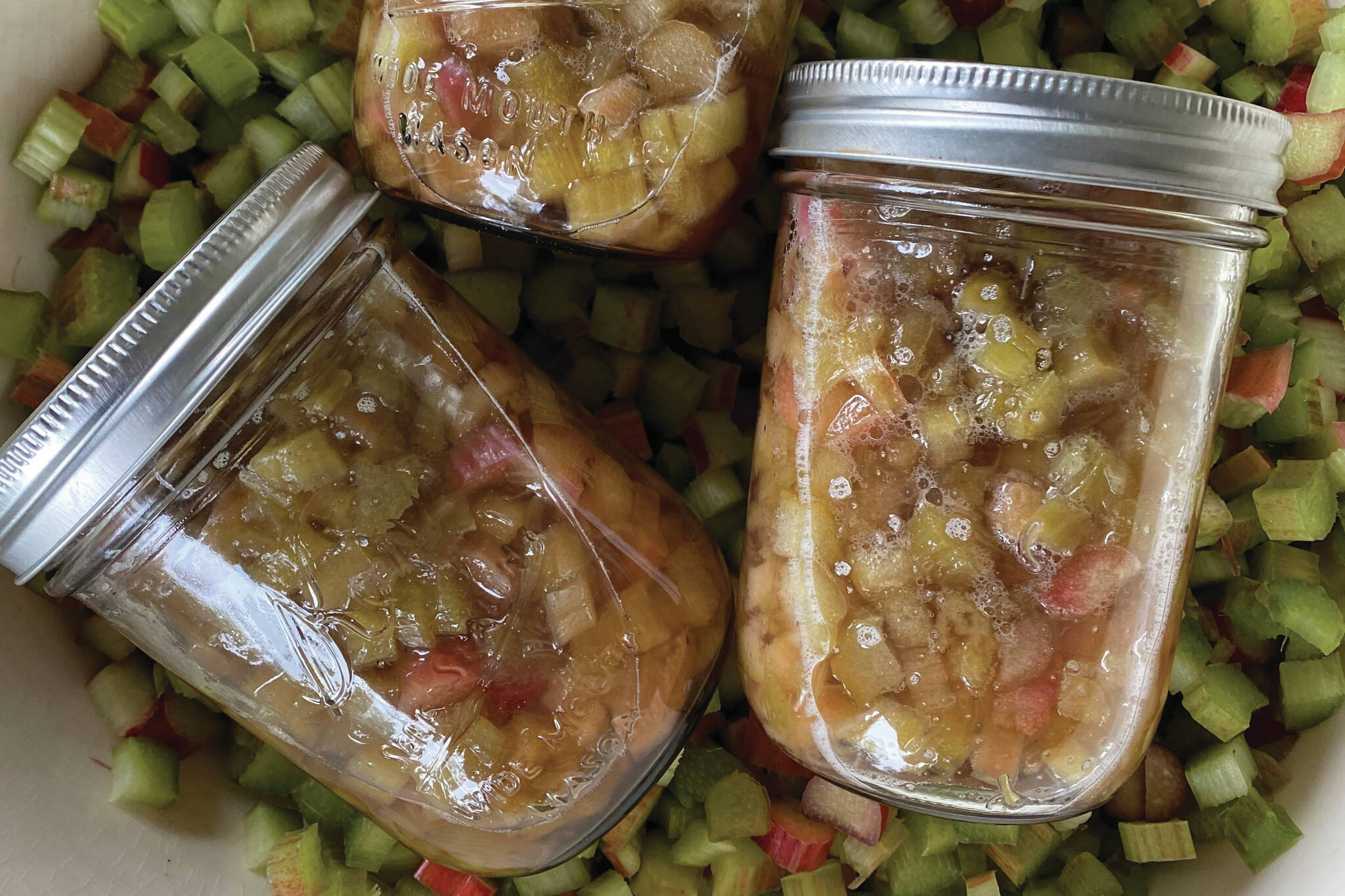A friend of mine from high school recently reached out on her social media to ask for a little taste of home.
She now lives far away in the heat of the desert and has been missing her rhubarb. She can find it fresh in her grocery store, but she reports that it is tasteless and limp by the time it is stocked on the shelves, and just does not satisfy.
Her mom’s house had huge prolific plants that crowded her side yard and made it impossible to pass through by August each summer. She was spoiled on crisp, vibrant pink puckering stems that would grow much faster than we could eat them. Her mom made rhubarb pie and sauce and syrup and had bags upon bags stored in the garage chest freezer by fall.
Her mom has since sold their home and moved down south, and her own sunbaked yard can barely support her tortured desert plants, so decent rhubarb has been out of her reach. She asked her Alaskan friends to please make a jar of rhubarb something and send it to her to satisfy her cravings, and I was happy to provide.
My own plants are still small and young, only planted last summer, but my mother-in-law has many large plants, and she was willing to share. She loves her rhubarb and wishes to preserve as much of it as possible, but the chore is time consuming, and she just doesn’t often have the free time to commit to washing and chopping and cooking and canning, so she asked me to help her do it while I’m at home with my little one.
She asked me to make rhubarb sauce with it and handed me her mother’s precious recipe book for the task. The recipe is simple, but the result is a sweet and versatile sauce to pair with both your breakfast yogurt and savory meats.
Ingredients for a small batch (about 3 pints of sauce):
2 quarts fresh or frozen rhubarb — cut into small pieces
1 cup sugar
Pinch salt
½ cup water
Canning Equipment:
A large stockpot
Canning tongs
3 pint-sized mason jars with lids and rings
Combine your ingredients in a saucepan and bring to a boil.
Turn down the heat and simmer until the rhubarb has broken down completely. You may need to add a little water as you go to keep the bottom from scorching.
The sauce should almost resemble applesauce when its done.
Meanwhile, prepare your canning equipment by sanitizing it in boiling water.
When the jars have boiled for at least 10 minutes, remove with sterile tongs and stage on a clean kitchen towel, open end up, beside the stove. You should leave the rings and lids in the water bath until ready to use to ensure cleanliness.
When the sauce is finished, carefully ladle while still hot into the prepared jars.
Wipe the rims with a wet towel to remove any drips.
Lid the jars and screw on the rings but do not tighten down all the way.
Carefully set the jars down back into the hot water bath, being sure the jars stay upright the entire time. The jars should be completely submerged.
Process in the boiling water for 10 minutes before returning to the kitchen towel.
As the jars cool, you should hear the telltale pop of the lids as they seal.
When the jars have completely cooled, check the seal of the lids before tightening down the rings. If the lid lifts off the jar, no seal has formed. You will have to either refrigerate and eat immediately or restart the process and try again.
The preserved jars will last for up to a year in the pantry.


